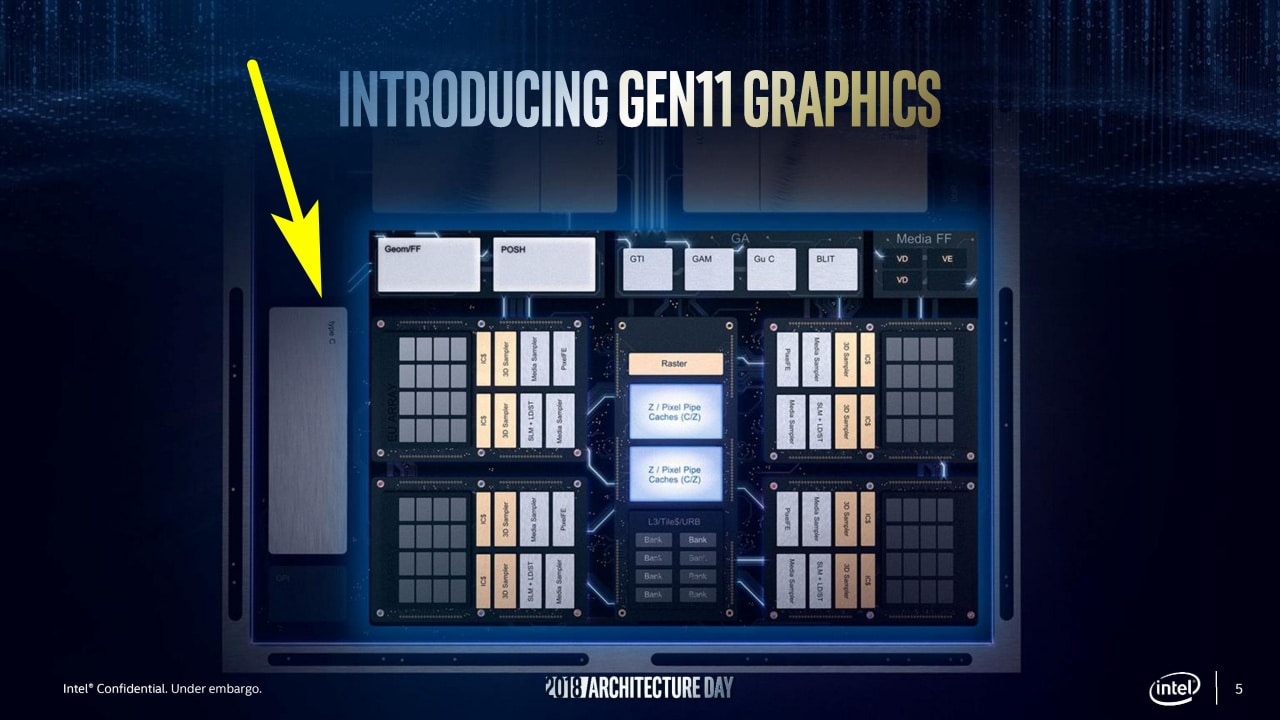Intel’s current processors based on the Skylake architecture use integrated graphics circuits based on the Gen9 graphics architecture. The idea was that Cannon Lake would introduce Gen10 on 10 nanometer manufacturing technology, but due to manufacturing problems on the node, Intel jumped directly to the Gen11 graphics architecture.
Gen11 is launched in conjunction with Ice Lake-U, which will be Intel’s first 10-nanometer processor family. Ahead of this year’s Computex, Intel is taking the opportunity to unveil more details about the architecture, including performance comparisons with competitor AMD and previous Gen9 architecture. Compared to the previous generation, there is a 72 percent higher performance in the popular Counter-Strike: Global Offensive.
However, the comparison is measured as a percentage and relative to the Core i7-8565U processor, after which no concrete performance figures are shown in the graph. Concrete performance figures, on the other hand, are presented by Engadget, which has been on a demo at Intel. Here it appears that the Gen11 graphics solution on average reaches about 70 FPS in Counter-Strike, compared to just over 40 FPS for the corresponding Gen9.
Both processors have a TDP of 15 watts, and the game ran in 1080p with low settings. In other games such as Overwatch and Total War: Three Kingdoms, improvements of 42 percent and 108 percent are noticed, which indicates that the performance improvements in Gen11 vary greatly between game titles.
The next comparison is between arch-rival AMD’s Ryzen 7 3700U with the graphics part Radeon RX Vega 10, and an unnamed Ice Lake-U processor from Intel. Both have the same TDP value of 25 watts and Intel compares both games and a series of synthetic tests. On average, Intel is about 4-5 percent above AMD, with 16 percent higher performance in Overwatch and 6 percent lower in synthetic 3DMark Night Raid.
Intel has also added support for the Variable Rate Shading (VRS) feature, which is now included in DirectX 12. Commonly used shaders to assign color to individual pixels, but VRS is based on the fact that each shader operation can handle several pixels, so that shading can be done in groups instead of individually. Parts of the image that are similar or not in focus then require less performance to render.
► Read everything from #computex-2019
With this addition, Intel got a significant performance boost, while AMD’s counterpart lacks support and thus falls behind the competitor. In addition to the new graphics architecture, better performance and energy efficiency also await thanks to the Sunny Cove processor architecture and Intel’s 10-nanometer technology.
Other news is a new media block and support for variable refresh rate through VESA Adaptive Sync – the same technology that AMD uses for image synchronization in the form of Freesync. Ice Lake with its Gen11 graphics will be launched towards the end of the year for laptops. At Computex, Intel is expected to present further details on May 28.
Source: Anandtech















